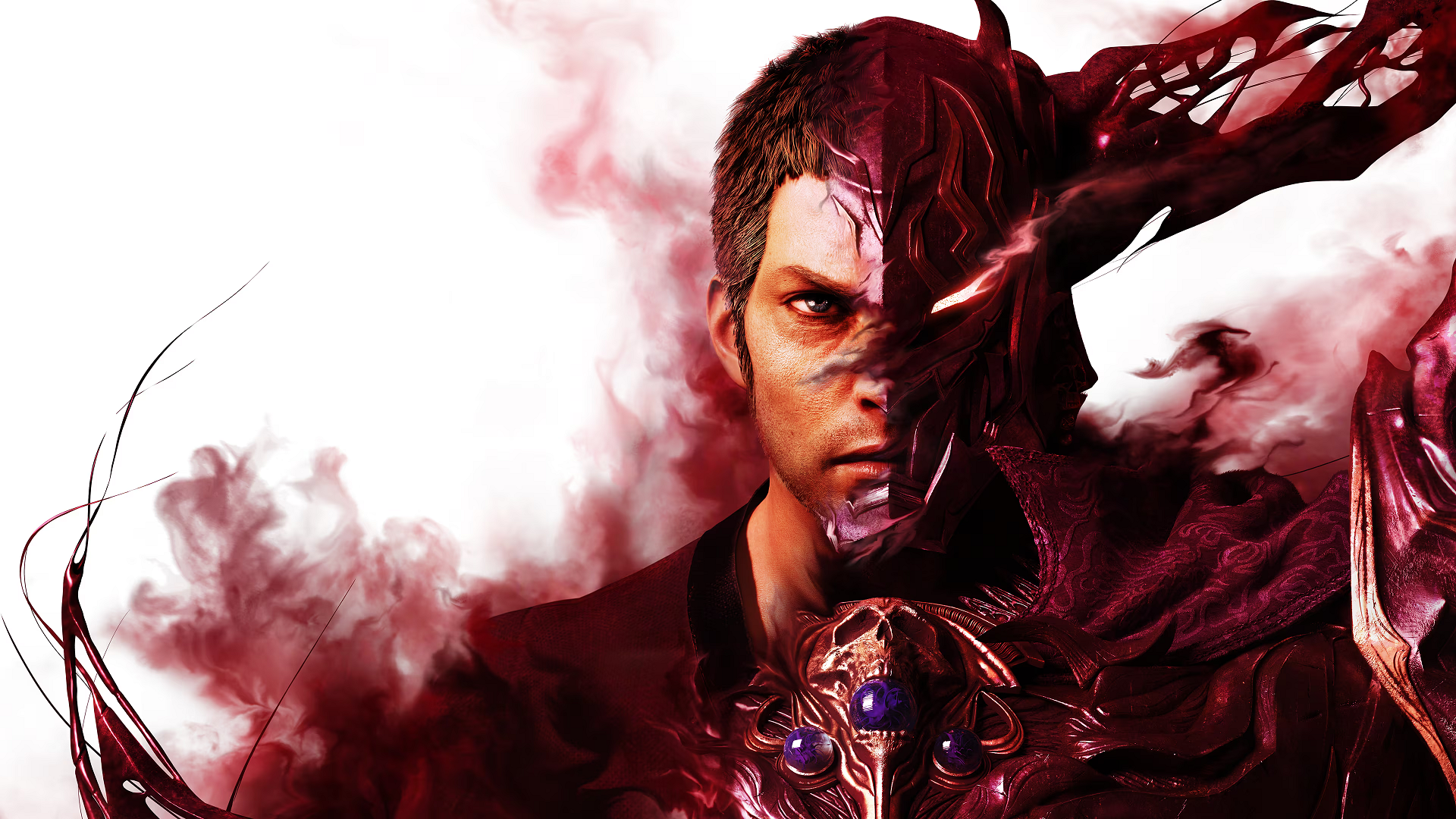I don’t really have much of a connection to the Final Fantasy series. Sure, I played the NES and SNES classics, most of them years after they actually came out, and I enjoyed them well enough. I was pretty much out on the series in the 3D era of games, however, gravitating to D&D adventures in Baldur’s Gate, Neverwinter Nights and the like. I say all of this to preface my thoughts in a way that will hopefully let you know that I’m not the type of person who will particularly relish in the fan service that occurs throughout Stranger of Paradise. I’m glad it’s there and my guess is the die hard fans have already made the decision as to whether or not they want to play this game, which has been out on Epic Game Store and consoles for a year. With the release of the game on Steam this month, I booted it up to see whether or not Stranger of Paradise holds up as just a good 3D character action game for those who still may be on the fence.
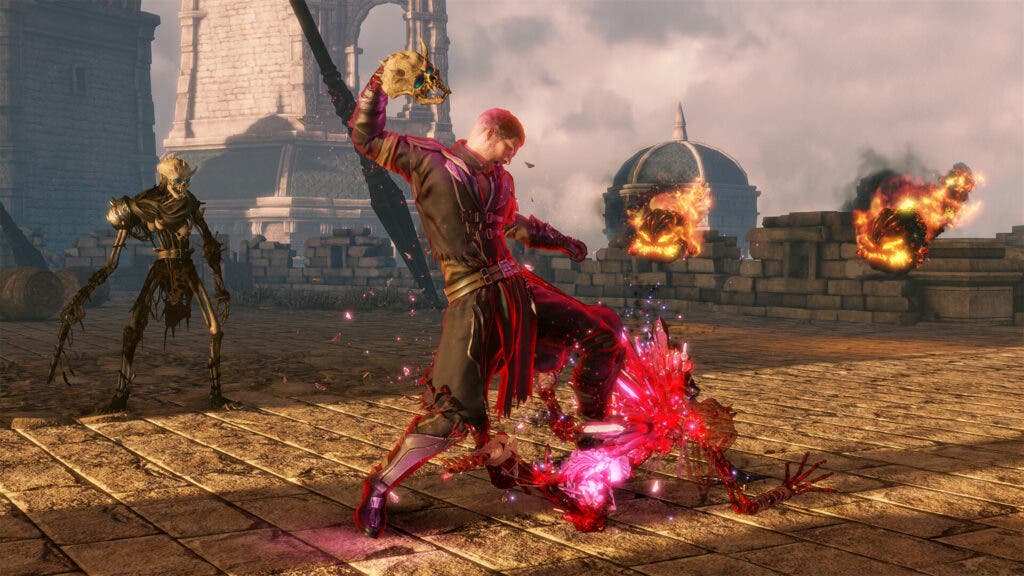
Stranger of Paradise opens with the protagonist, Jack Garland, and his quest to kill Chaos. After a brief tutorial, Jack arrives at the kingdom of Cornelia, black crystal in hand and planning to meet with the King to obtain permission for his quest. Outside the gates, he awkwardly encounters two others, with crystals of their own. They decide to form a team prior to meeting with the King and appeal to him that they are 3 of the 4 Warriors of Light whom prophecy has foretold will be the heroes that will save the world from darkness. The King agrees and will grant them access to the Shrine of Chaos if they first agree to slay monsters on his behalf. You may be forgiven for thinking this is the start of your journey but instead, what plays out is simply a black screen with white text talking about all the adventures this crew went on and that they have completed the King’s task. You then find the crew back on board a ship, bloodied and bandaged, talking amongst themselves about how they can’t wait to kill Chaos. The pacing of this first sequence, from intro boss fight to tutorial to story setup is just total nonsense delivered at a breakneck pace. A lot has been made about the game and it’s meme-worthiness but unfortunately this is an instance where what it’s giving the player is just confusing and bad, but not in a particularly great way. The problem ends up being how awkward the exposition dump is and how it tries to do too much with the time given. Why does the King need them to go off monster hunting before embarking on their quest? It beats me, but that’s time I would’ve preferred getting to know the cast before their journey rather than reading about their adventures I never even get to see.
What follows from here is a pseudo-retelling of Final Fantasy 1’s story, where the Warriors of Light must restore the Crystals of Wind, Fire, Earth, and Water in order to save the world from the darkness threatening the land. To say much more would head into spoiler territory, but after what I found to be a pretty boring stretch of early game, accompanied by not very much interesting happening in the story, the narrative picks up and starts doing some pretty interesting things with what I know to be established Final Fantasy lore. It’s in this area that the game makes veiled attempts to connect you to the world, and there’s some signs here and there of what may have been a more ambitious RPG at one point. Between missions, you can talk to various NPCs and townspeople, but these interactions are limited to short banal mutterings selected from a menu and played out in a static scene with horrific looking character models. Cutscenes play out delivering story segments and then end abruptly. Characters show up for seemingly no reason and without much at all to do or say. The presentation throughout is rough but it does eventually start to make an impression. The problem is when the turn happens that really kicks off the later half of the game, Stranger of Paradise may have already lost you.
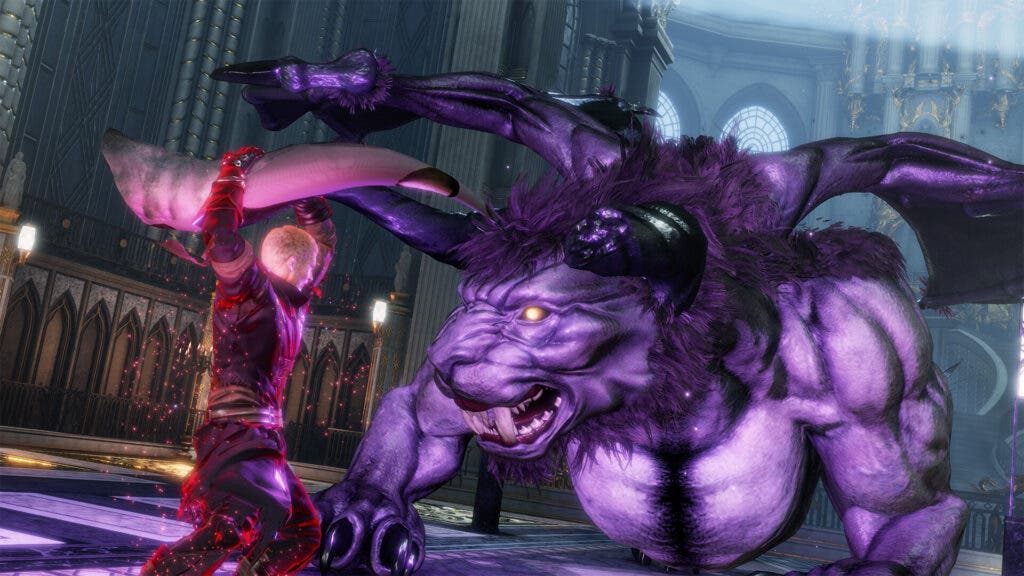
To understand why that is, you’ll need to look no further than how the game presents itself apart from Souls-likes. This is a Team Ninja game and they have really established themselves as curators of their own spinoff of the Souls formula popularized by From Software. It’s fair to say at this point that Stranger of Paradise is less a Souls-like and more a Nioh-like. Where Souls games are designed around large, open areas with connecting paths and branching areas to explore, Nioh games are firmly rooted in distinct levels selected from a menu or map. Where Souls games have curated items to acquire and upgrade throughout your journey, Nioh games are full-on looter RPGs with random drops. Where Souls games task the player to master a fairly simple moveset across a diverse set of weapon types and react to enemies’ increasingly large set of attack patterns, Nioh games tend to feature more technical and combo-based combat systems. These differences are not a point of criticism on their own, but the problem ends up being how some of them are implemented in Stranger of Paradise. If you’re the type of player who really likes exploring every nook and cranny of a gorgeously crafted world, you’ll find little to occupy yourself here. The levels themselves are primarily linear corridors filled with similar types of monsters. There’s variety from level to level but primarily within a level, you are going to be hacking through mostly the same types of enemies. That wouldn’t be so bad if the world were filled with interesting things to find or see, but unfortunately there just isn’t much here. You may be slightly rewarded by taking a left-turn off the main path, but your reward will almost always be a chest with random loot you don’t particularly need. The game quite frankly looks like something out of last generation at best in both its character and world design, so rarely did I find exploration for exploration’s sake worth doing either. This is a strictly “get from A to B” with a boss fight at the end affair, with little else to see.
But at least playing these levels is worth it for the loot, right? Unfortunately not. While I’m generally a fan of loot games, what Stranger of Paradise does is exactly the opposite of what I’d want. Rather than doling out meaningful upgrades at a pace that feels fun and with clear feelings of power spikes, it instead floods the player with so much junk from every enemy you kill that you can’t help but be overwhelmed by the tiny percentage increases in defense or damage you get from all the stuff the game throws at you constantly. It took me all of 2 levels to decide I was just going to press the “optimize gear” button and let it figure all that out for me — a routine I had to pause to perform every 5 or so minutes to make sure I was equipping the highest item level gear at any point in time for the job I was currently running. Add to the fact that you have 2 other members in your party you also have to equip and there just wasn’t any way I felt compelled to keep up with the pace of upgrades the game was showering me with literally every fight. Why craft a loot system where the loot is both plentiful and unrewarding? Because all of the story missions have recommended item level requirements the player is gated behind unless they also do each side mission. These missions are just doing the same level again but a slightly different route and better drops. I learned quickly that if I didn’t want to repeat this grindy content, the best way to handle the situation was just loading into the next main mission under-leveled. I’d then run past enemies until I found a few chests with gear that would boost me to a level where I felt competitive again. It’s a very perplexing choice to make a game where loot largely feels meaningless for the vast majority of the campaign. It’s impossible to get excited about a new sword you find when you’ll be replacing it literally minutes later because you only really need the ever-increasing item level. The game has an upgrade system where weapons and gear can be salvaged for items that allow the player to enhance weapons, but I never once found it useful to do so with the pace of higher level drops I was getting from playing.
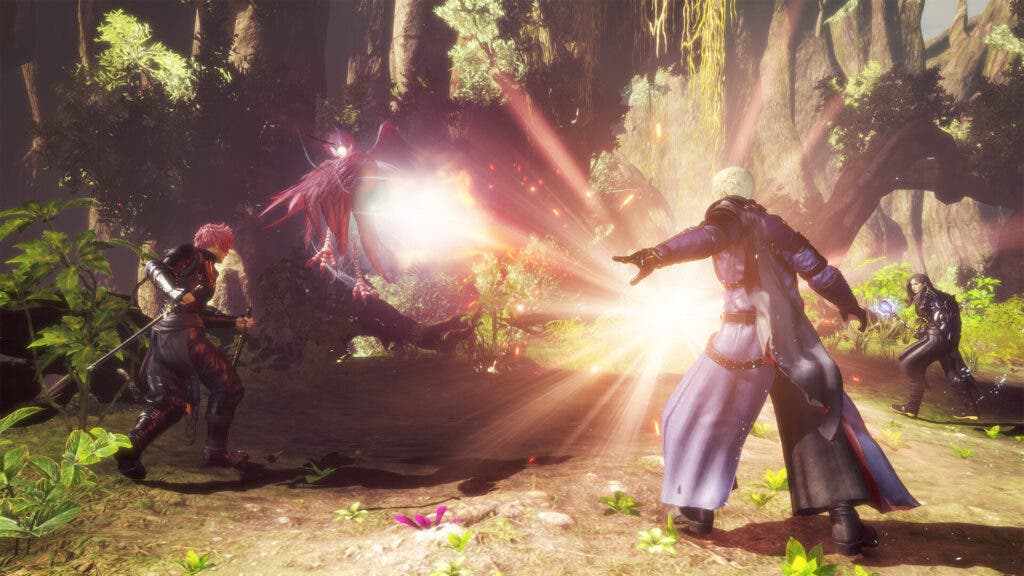
A couple levels into the game, and I was pretty much out on Stranger of Paradise. I found the enemies and level design uninspired, the loot unengaging, and the story going between bad and nonexistent. The game just throws so many mechanics at you so fast that it’s really hard to fully grasp the systems involved, a recurring theme with Team Ninja games. Stick it out, however, and you start to see the actual hook with this game: the combat. The combat and the job system quite literally save this game from how boring the first half’s story is. While I couldn’t be bothered with the exploration or loot, I had a lot of fun with the combat once everything clicked and I started exploring jobs beyond the starting ones you’re given. Combat plays out mostly with RB as your basic attack and RT as your combo attack finisher. Pressing RT by itself typically would utilize your job’s primary ability and then finishing an RB combo with RT would execute a different ability you have unlocked and customized into your character sheet based on the inputs that came before it. LT opens a wheel of additional class abilities such as spells for magic users, and LB guards. One of the new ideas the game brings is in its inclusion of the Soul Shield, which is mapped to the Xbox B button. Employing the shield for a period of time actively drains your mana, which can only be regenerated through attacking, but it ends up being especially useful against magic attacks sent your way. Blocking a magic attack with Soul Shield not only prevents the damage, but absorbs the spell and lets Jack fire it back at the enemy a number of times. Many of the more challenging fights really rely on being able to execute this well and it’s ended up being one of my favorite additions to the combat system from similar Team Ninja games.
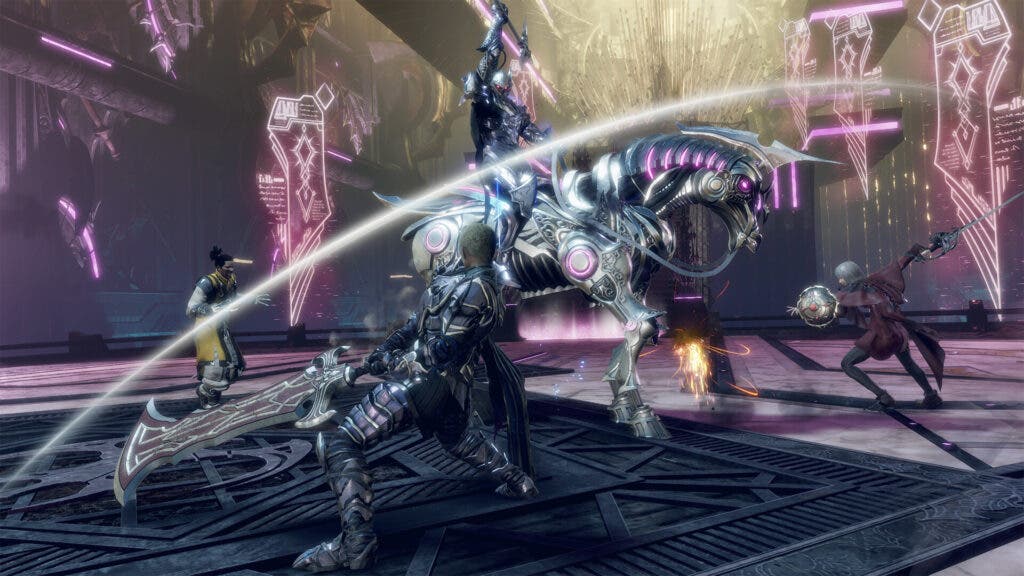
The combat system itself is very fluid and feels great, but it’s the customization that jobs provide that really sets Stranger of Paradise apart. In Final Fantasy games, jobs are basically classes and here, there are 28 jobs to explore each with their own play style, talent tree, skills, signature ability, and upgrade path into advanced or expert jobs. To add to this complexity, you can actually equip up to two jobs at once and even switch between them with the Y button mid-combo. Want to swap between a sword-wielding Warrior and a spell-slinging Black Mage? An instant button press is all that’s required, including all of the weapons and armor to go with each. It’s a slick system that adds near infinite customization to how you approach combat, and every new weapon that dropped and unlocked a new job I could try out had me excited to see what I could do with it. I looked forward to seeing what possibilities for advanced jobs I could get in particular. My favorite throughout my play was upgrading into a Knight, which allowed me to emit shockwaves of light that damaged enemies when I would guard attacks. That led me to then transition into a Paladin by upgrading both Knight and White Mage job talent trees. The Paladin buffed my character with life-leeching holy attacks on my weapon, which turned into explosions of light when I was at full health. I then was able to customize my build further by unlocking new attacks and literally slotting them into a sequence of button presses that would trigger which attack I wanted. When I got bored of a particular job, I would start working on leveling up another one, constantly expanding the options I had to get past a difficult level or boss encounter.
I really can’t emphasize enough how much the job system and combat carries Stranger of Paradise. The game has difficulty settings that allow players to breeze through the game simply to see the story, but doing so really does trivialize the one thing it does that distinguishes itself from its peers. Still, it’s nice to have that option for folks who do not want to put up with the punishing difficulty the genre is known for — and seeing the story play out is something many will want to do. While the game really leaves a bad first impression, and its first Act is pretty boring and held together by its excellent combat, the story picks up quite a bit at around the midway point. It’s here where it takes some turns that really play with the fiction established by the first game in a way that surprised me and made me want to see it through to the end. This is less the retelling of Final Fantasy 1 than was advertised and more of a prequel or recontextualizing. It does take some interesting narrative turns but unfortunately it just takes a long time to click and until it does, you’re mostly going to be witnessing a mess of confusing cutscenes and story told through loading screen text.

I played Stranger of Paradise on a PC with the following specs:
- Microsoft Windows 11 Pro
- Intel Core™ i7-13700KF 16-Core 3.4 GHz
- EVGA NVIDIA GeForce RTX 3080 Ti
- Team T-Force Delta RGB 32GB DDR4 3200 MHz
- LG UltraGear 34GP950B-G (21:9 Ultrawide @ 3440×1440)
Despite some reports of issues around its PC launch last year, I found performance to be pretty solid. Framerates were staying at a consistent 120 fps at Ultra High settings in indoor areas but dipping at times to around 90 fps in some of the larger open areas. Visual bugs plagued some areas of the game, however. I’d occasionally get enemies catching on surfaces of the game, clipping under platforms as I fought them. This didn’t impact the experience too much, however. More annoying was the support for Ultrawide monitors. Almost every time I used a finishing move on an enemy, the game would switch into a brief finishing move animation that would force the game into a 16:9 aspect ratio with black bars, and then those black bars would stick to the screen for some time after, impairing vision of the character’s surroundings. Often it would take several seconds to correct itself back to 21:9. It was annoying enough that I really tried to avoid using the finishing moves if I could. Hopefully this is something they can still fix eventually, or perhaps there’s a community fix out there that does it but be warned if you are playing on anything wider than 16:9.

Ultimately, the mileage you’ll get out of Stranger of Paradise will come down to whether or not you either have a deep connection to the story of Final Fantasy or you really get a lot out of the Team Ninja combat formula and the variety of gameplay available through the job system sounds fun to you. The game is quite fun for large stretches and really allows you to live the power fantasy of the series but in an action RPG mode. Despite the story feeling as disjointed as it is, there’s enjoyment to be had in seeing just where the hell the train is taking you next and what all this weirdness is amounting to. I just wish some of the edges weren’t so rough.
A Steam code was provided by the publisher for review purposes
